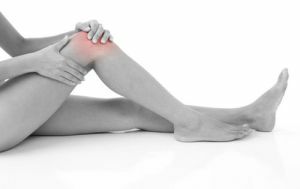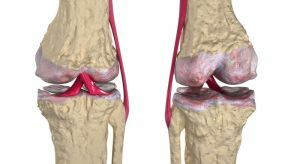 Reactive arthropathy( RA) is an inflammatory, non-inflammatory joint injury that occurs after an infection of the genitourinary system, intestines, or respiratory system.
Reactive arthropathy( RA) is an inflammatory, non-inflammatory joint injury that occurs after an infection of the genitourinary system, intestines, or respiratory system.
As a rule, the disease develops 2-4 weeks after the infection. Most often, young people aged 20 to 40 suffer, who have many unprotected sex contacts.
A high probability of RA development is observed in HIV-infected people.
Contents of the article
- Etiology and pathogenesis of the disease
- Clinical picture
- Approach to diagnosis
- Treatment regimen
- Traditional medicine recipes
- Prognosis and possible complications
- Preventive measures
Etiology and pathogenesis of the disease
At present, it is not known what causes the disease. It is assumed that the hereditary factor lies at the basis of pathology. In 70% of patients, HLA-B27 antigen was detected.
But its one little, also the development of an infectious disease is necessary, against which will develop reactive arthropathy.
Infectious agents may be:
- chlamydia;
- ureaplasma;
- mycoplasma;
- enterobacteria( Yersinia, Shigella, Escherichia coli, Salmonella).
Most often, reactive arthropathy is observed after the transferred chlamydia. 
It can be infected not only sexually, but also with aerosol and contact-household. The source of chlamydial infection can be people and animals( cats, dogs, birds).
The second place among diseases on the background of which developing reactive arthropathy is occupied by intestinal infections.
The mechanism of development of reactive arthropathy is not fully understood. It is believed that there is an excessive immune response to the bacteria that enter the body, resulting in the formation of immune complexes that are deposited in the synovial membrane.
Clinical picture of
Reactive arthropathy may be accompanied by the following symptoms:
- is a characteristic articular syndrome;
- symptoms of infection, against which arthropathy developed;
- lesions of skin and mucous membranes;
- of the vertebral column;
- affection of internal organs;
- systemic inflammatory reaction.
Typically, the first episode of arthritis occurs within 30 days of unprotected intercourse or the development of an intestinal infection.
When the disease develops, the symptomatology is as follows: 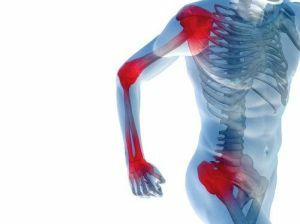
- Soreness in the affected joints of is observed with any motor activity, is enhanced at night and at rest. The nature of the pain is dull, aching, twisting.
- Stiffness in joints due to the difficulty of outflow of fluid from the affected joint. It is often observed after a prolonged immobility of the joint and passes when the movement resumes.
- Swelling of the .
- Local increase in temperature of in the area of the affected joint.
On X-ray images in the initial stages it is possible to find: periarticular osteoporosis, periarticular edema of adjacent tissues, sometimes in the small joints there may be an enlargement of the joint gap.
Symptoms of infection, against which reactive arthropathy developed, can be different:
- if it is urogenital infections , then purulent discharge from the genital tract, upset urination, abdominal pain, intermenstrual bleeding, prostatitis, etc. can occur.
- when the cause of the disease was intestinal infection , the patient may have a loose stool, fever, weakness, nausea, vomiting.
From the lesions of the skin and mucous membranes with reactive arthropathy, conjunctivitis, keratitis, inflammation of the optic nerve and choroiditis, stomatitis, psoriasis can be observed. At the beginning of the disease, pain in the lumbar region is characteristic, symptoms of 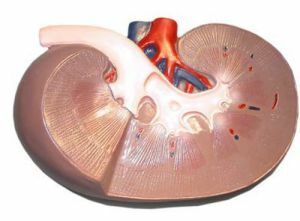 sakroileitis are observed.
sakroileitis are observed.
From lesions of the internal organs can be pathologies of the kidneys( protein, blood or white blood cells in the urine, Berger's disease, glomerulonephritis), damage to the aortic valve, inflammation of the serosa of the heart, palpitations, meningoencephalitis and peripheral paralysis.
Systemic inflammatory reaction manifests itself as general weakness, weight loss, fever and ESR.
Approach to the diagnosis of
If a suspected reactive arthropathy is prescribed:
- a general blood test( see ESR);
- general urine analysis( determine the diseases of the genitourinary system);
- urine culture( identify causative agent);
- definition of HLA-B27;
- radiography of affected joints;
- tests to exclude gout and rheumatoid arthritis;
- electrocardiogram and echocardiogram;
- consultation of an ophthalmologist, with damage to the organs of vision.
Treatment Scheme
For the treatment of reactive arthropathy, a comprehensive approach is used, in which three components can be distinguished:
- Etiotropic therapy .Prescribe antibacterials of a wide spectrum of action. This group of pharmaceutical preparations
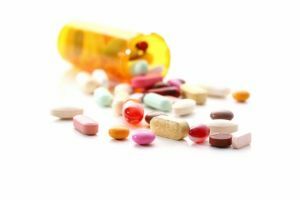 includes antibiotics of the penicillin and tetracycline series, fluoroquinolones, and macrolides. The dose is selected individually, depending on the age of the patient and the severity of the disease. The duration of treatment is 10-14 days.
includes antibiotics of the penicillin and tetracycline series, fluoroquinolones, and macrolides. The dose is selected individually, depending on the age of the patient and the severity of the disease. The duration of treatment is 10-14 days. - Pathogenetic therapy , the purpose of which is to stimulate the patient's immunity. The specialist appoints immunostimulants and immunomodulators.
- Symptomatic treatment of is aimed at eliminating the signs of the disease. The patient is prescribed NSAIDs or carries out a short-term course of glucocorticosteroids. Sometimes prescribe immunosuppressive pharmaceuticals. They are prescribed only with a strong inflammatory process, which must be confirmed not only by a clinical picture, but also by laboratory data.
Traditional medicine recipes
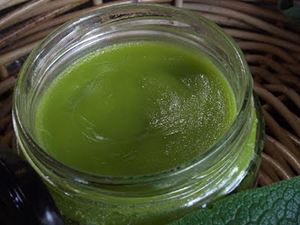 For the treatment of various diseases, recipes of traditional medicine have become increasingly popular. These are mostly compresses and ointments.
For the treatment of various diseases, recipes of traditional medicine have become increasingly popular. These are mostly compresses and ointments.
They do not eliminate the cause of the pathology, but reduce the symptoms of the disease, thereby facilitating the patient's suffering.
Among the popular:
- Recipe 1 .Ointment from the comfrey.0.5 cups of comfrey roots or 1 cup of comfrey leaves pour 200 ml of vegetable oil and keep on low heat for 30 minutes. Then pass along with beeswax through a meat grinder. After 24 hours, the ointment is ready.
- Recipe 2 .Horseradish and black radish. Grind them on a grater. Skin over the damaged area is oiled with vegetable oil. Kasha is applied for 2-3 hours.
Recommended therapeutic exercise, developed on an individual plan. Application of cold compresses. Two weeks at the beginning of the disease should limit the burden on the joints, but complete immobilization is contraindicated.
Prognosis and possible complications
As a rule, in most patients the pathology is self-limiting, with the average duration of the first episode of the disorder ranging from 4 to 6 months.
Complications of reactive arthropathy are usually observed due to aggressive arthritis. And most often occur with a genetic predisposition.
Somewhere in half of the patients there are relapses of arthritis at different time intervals. In 17% of patients, the disease becomes chronic.
There is erosive damage to the small joints of the foot. Somewhere in 12% of patients, deformity of the foot develops, but severe deformation is rarely observed.
In the absence of proper therapy or partial recurrence, acute anterior uveitis can provoke the rapid development of cataracts.
Prevention measures
Measures for the prevention of reactive arthropathy are aimed at preventing infections, against which it may arise. 
It is necessary to observe personal hygiene, wash hands before eating, after contact with animals and visiting the toilet, you should follow the rules of food storage, monitor the quality of cooked food.
Citizens who have antigen HLA-B27, are recommended to take antibacterial drugs in order to prevent "travelers' diarrhea".
To prevent urogenital infections, casual unprotected sex should be avoided.

